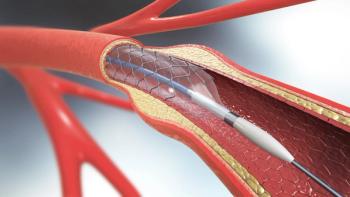The FDA approved denosumab-bbdz (Wyost; Sandoz) and denosumab-bbdz (Jubbonti; Sandoz) as the first and only FDA-approved denosumab (Xgeva and Prolia; Amgen) biosimilars to treat all indications of the reference products Xgeva and Prolia, according to a press release from the company.1
The medications have the same dosage form, route of administration, regimen, and presentation as the reference medications. They are also approved as interchangeable by the FDA for the reference medications for all medications.1
3 Key Takeaways
- Sandoz received FDA approval for Wyost and Jubbonti, the first biosimilars to reference the drug denosumab (marketed as Xgeva and Prolia by Amgen).
- These biosimilars are similar to the reference drug in terms of dosage, administration, and efficacy, but potentially lower in cost.
- Wyost and Jubbonti are approved for various bone-related conditions, including:
- Preventing skeletal-related events in patients with multiple myeloma or bone metastases from solid tumors.
- Treating osteoporosis in postmenopausal women, men with osteoporosis, and individuals with glucocorticoid-induced osteoporosis.
- Increasing bone mass in men receiving androgen deprivation therapy for prostate cancer and women receiving adjuvant aromatase inhibitor therapy for breast cancer.
"Sandoz has achieved the first FDA approval for biosimilars to denosumab, a medicine that can address primary and secondary bone loss, such as osteoporosis, as well as cancer-related skeletal events, which are disease states that can profoundly reduce quality of life for patients,” Keren Haruvi, president of Sandoz in North America, said in the press release.1
Wyost is approved as a 120 mg/1.7 mL injection, and is a human monoclonal antibody designed to bind to the RANKL protein, which activates osteoclasts, or cells that break down bone tissue. Jubbonti is approved as a 60 mg/1 mL injection, which is also a human monoclonal antibody that binds to the RANKL protein, according to the press release.1
Wyost has been approved to prevent skeletal-related events for patients with multiple myeloma and in patients with bone metastases from solid tumors, according to the press release. It has also been indicated for the treatment of adults and skeletally mature adolescents who have giant cell tumor of bone that is unresectable, or when surgery is likely to cause severe morbidities. Further, it is indicated to treat hypercalcemia of malignancy refractory to bisphosphonate therapy, according to the press release.1
For Jubbonti, the drug is approved to treat osteoporosis for postmenopausal women who are at high risk for fracture, increase bone mass for men who have osteoporosis and are at high risk for fracture, and to treat osteoporosis in men and women at high risk for fracture when their condition is induced by glucocorticoid. Furthermore, the drug is indicated to increase bone mass in men at high risk for fracture who are receiving androgen deprivation therapy for nonmetastatic prostate cancer and for women at high risk who are receiving adjuvant aromatase inhibitor therapy for those with breast cancer, according to the press release.1
The FDA approval is based on clinical studies and has a labeling with safety warnings. Jubbonti is also accompanied by the Risk Evaluation Mitigation Strategy (REMS) program. As a part of the program, REMS establishes the need to inform prescribers and patients about the risk of severe hypocalcemia associated with the medication for those with chronic kidney disease, and included patients who are dialysis dependent.1
Due to ongoing litigation regarding these products, the company did not comment on anticipated launching times or other launch details at this time, according to the press release.1
The prevalence of osteoporosis increased from 2007 to 2008 and 2017 to 2018 in women, but not men, according to a CDC report. In 2010, there was an estimate of 10.2 million individuals aged 50 years and older with osteoporosis and about 43.3 million had low bone mass, which is a precursor of osteoporosis, according to the report.2
References
Sandoz receives FDA approval for first and only denosumab biosimilars. News release. Sandoz. March 5, 2024. Accessed March 5, 2024. Email.
Sarafrazi N, Wambogo EA, Shepherd JA. Osteoporosis or Low Bone Mass in Older Adults: United States, 2017-2018. NCHS Data Brief. 2021;(405):1-8.







































































































































































































